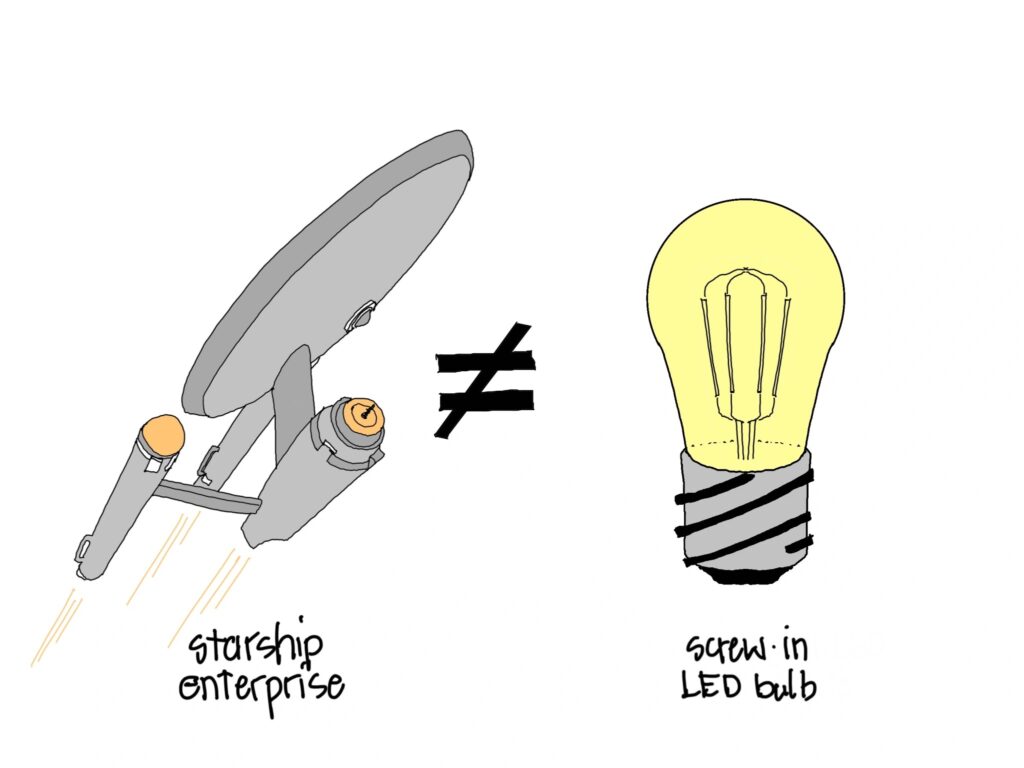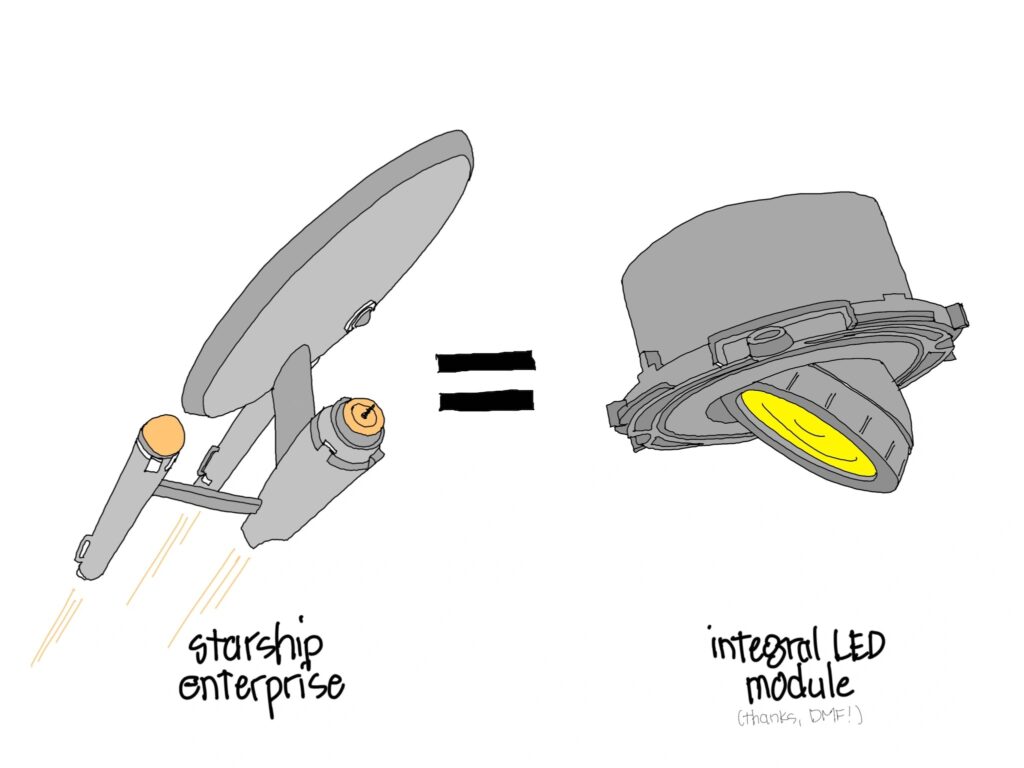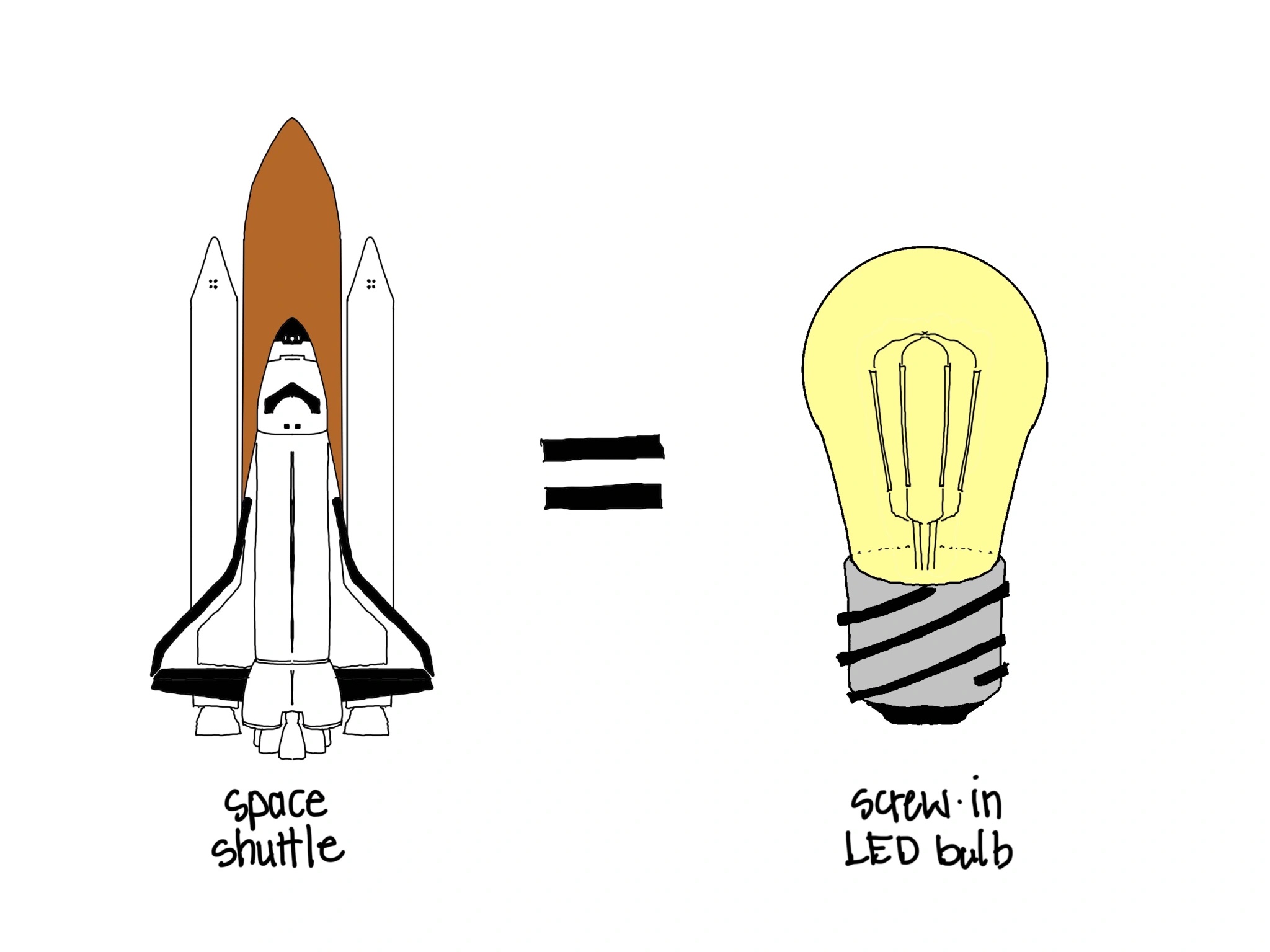There is a popular story that ties the Space Shuttle technology to the width of Roman horse’s backside, and it just occurred to me that there is may be a parallel in lighting.
The first story goes something like this: the booster rockets on the Space Shuttle were a certain diameter because they had to fit through rail tunnels between the factory and launch pad. Those tunnels, in turn, had to be a certain width to fit standard gauge rail cars. The standard gauge rail car was based on the common wagon wheel width from Britain at the time the steam engine was invented. Wagon wheels in Britain were spaced out so they could run easily in the stone roads that carved across England. Those stone roads were made by the Romans a couple thousand years ago. The ruts were made by Roman wagon wheels. Roman wagon wheels were spaced apart to fit behind two donkeys.
The punch line usually includes something like “our most advanced technology for space exploration is therefore beholden to the width of an ancient donkey’s butt.”
What does this have to do with lighting, you might ask?

Most of us have made the switch the LED, replacing our old compact fluorescent, incandescent, or halogen bulbs with the more energy-efficient modern technology. But, like the Shuttle rockets, we cram these LEDs into a bulb shape based on a 130-year old technology – the incandescent bulb. We use the same screw-in base and even the same 120 volt wiring, just like we are using railways based off Roman cart wheel spacing. Never mind that LEDs use an entirely different electrical paradigm (low voltage DC versus high voltage AC). Too bad that LEDs can be the size of the period at the end of this sentence, we still use bulbs 2.5″ wide and twice that in height.
I can imagine that, if rocket scientists did not have to ship parts by rail, they might have come up with a different propulsion system for the Space Shuttle.
I can imagine that, if lighting manufacturers did not have to fit LEDs into incandescent shapes, they might have come up with a different lighting system for our homes.
They did.

There are many ways to describe the modern LED lighting system that eschews the century-old constraints of the incandescent bulb. (I just used eschew in a sentence, so I am taking a moment to be proud of myself.) I’ll use “integral LED,” and “built-in” and “onboard” to describe various versions of the modern LED light fixture.
These new systems, like AiSPiRE’s Atmosphere fixtures, USAI’s BeveLED, or Colorbeam’s S-Series, all have one thing in common: the complete absence of a screw-in bulb. In each case the tiny LED chips are connected to large heat sinks to efficiently control heat and prolong chip life. Drivers convert the incoming high voltage AC power to low voltage DC power, further improving performance and life. Interchangeable optics allow beam spreads to be changed at will when a new painting goes up, a new table comes in, or the kitchen is remodeled.
Everything about these systems is different than the screw-in LED bulb that is usually placed in a thin metal “can” light. You’ll pay more up front and less later. You’ll get better light every day for the next 25 years. You’ll throw fewer components in the trash. Simply put, as a lighting designer I want to use the right tool for the job, and the screw-in LED bulb should be used only as a last resort.
That does not mean the new systems are without flaw. There is a big question in our minds about end-of-life processes for all the integral LED systems being installed today. Will there be easy update solutions twenty years from now, or will we be ripping them out of the ceiling, recycling the metals, and installing new? I would be delighted if a new standard was created, at least for the driver and light module, that would offer some long-term interoperability (like the screw in base of old). There are some manufacturers like DMF that have something along those lines, but widespread adoption is needed for true future-proofing.
Let me sum up. If you think the Space Shuttle is the best we can do for space exploration, then the screw-in LED bulb might be good enough for you. If you think we can build a better spaceship (how about a booster rocket that returns home and lands itself?), then you might consider advanced fixtures with built-in LEDs. They can improve every waking moment of your life (and even help you sleep better at night).
